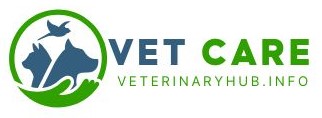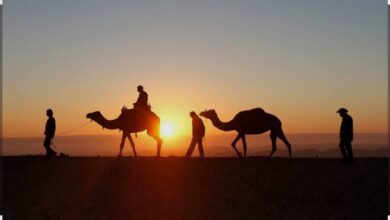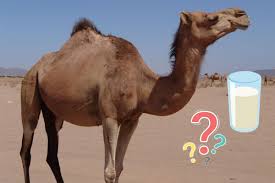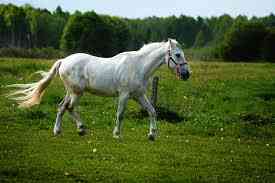
Belongs to Horse family:
- A male horse is called a stallion
- A female horse is called a mare.
- 20 interesting facts about horses:
1. Horses belong to the species Equus ferus caballus and have been domesticated for over 5,000 years.
2. A horse’s average lifespan is 25 to 30 years, though some live into their 40s.
3. Horses can sleep both standing up and lying down due to a unique locking system in their legs.
4. They have excellent memories and can recognize people and places even after years.
5. Horses communicate using facial expressions, body language, and vocalizations like neighs and whinnies.
6. They have nearly 360-degree vision, with only two small blind spots in front of their nose and behind their tail.
7. A horse’s teeth take up more space in its head than its brain does.
8. Horses have a strong social structure and form close bonds with herd members.
9. They are herbivores and have a digestive system adapted to grazing on grasses for most of the day.
10. The fastest recorded sprinting speed of a horse is about 55 mph (88.5 km/h).
11. Foals (baby horses) can stand and run within a few hours of birth.
12. Horses can rotate their ears 180 degrees to pick up sounds from all directions.
13. There are over 350 different breeds of horses around the world.
14. A horse’s hoof is made of keratin, the same material as human fingernails.
15. Wild horses still exist today, like the Przewalski’s horse native to Mongolia.
16. Horses can express over a dozen facial expressions—more than dogs or chimpanzees.
17. They have color vision but see fewer colors than humans.
18. Horses can feel emotions like joy, fear, and anxiety, and they often mirror human moods.
19. They have a strong sense of direction and often remember paths or trails they’ve traveled.
20. Horseback riding can improve human balance, coordination, and even emotional well-being.
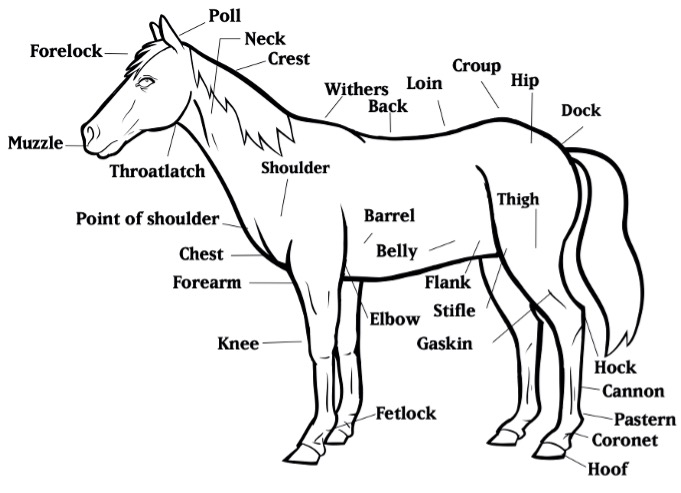
Nutritional Requirements of Horses and Other Equids:
Horses, as herbivores, have specific nutritional needs for optimal health and performance.
- Equine animals (horses, ponies, donkeys, mules, and even zebras) can use forages such as pasture/range grasses and legumes, preserved hays, and other forage-based feeds as the major or sole sources of nutrition due to fermentation in the cecum and large colon.
- However, enzymatic digestion of carbohydrates, protein, and fats is also of major importance.
- This occurs in the small intestine, which is the primary site of absorption of sugars, amino acids, long-chain fatty acids, minerals, and vitamins.
- Any of the nutrient sources that escape small intestinal digestion and absorption are passed on for microbial degradation in the large intestine, where byproducts of microbial fermentation, such as volatile fatty acids, amino acids, and vitamins, are absorbed.
- Fermentation is altered by the type of substrates available as well as by body temperature and pH.
- Water Requirements of Horses and Other Equids:
- Water requirements vary with environmental conditions, amount of work or physical activity being performed (ie, water lost through sweating), type and amount of feed (dry feeds need more than succulent grasses), and physiologic status of the animal.
- The average minimal maintenance daily water requirement of a sedentary adult horse in a thermoneutral environment is 5 L/100 kg body weight/day.
- However a 500-kg adult horse in minimal work will typically drink 21–29 L of water per day when feed a mixed hay/grain ration and/or pasture grasses.
- If feed only dry hay, water intake may almost double. Lactation or sweat losses also increase the needs by 50%–200%. A 500-kg horse exercising for 1 hour in a hot environment may need to drink more than 72 L of water to replace sweat and evaporative losses.
- Lactating mares need 12–14 L per 100 kg body weight to sustain good health and milk production.
- Protein and Amino Acids Requirements of Horses and Other Equids:
- Although some microbial amino acid synthesis and absorption occurs in the cecum and large intestine, it is not sufficient to meet the amino acid needs of growing, working, or lactating horses.
- Therefore, the protein quality of the feed provided to these classes of horses is important. Light horse weanlings are estimated to require 2.1 g, and yearlings 1.9 g, of lysine/Mcal DE/day.
- Requirements for other dietary amino acids have not been established for other breeds.
- The crude protein recommendations given in tables Estimated Daily Major Nutrient Requirements of Growing Horses and Ponies and Estimated Average Daily Nutrient Requirements of Mature Horses and Ponies should be adequate if good quality forages and concentrates are used in the ration.
- The amino acid balance in alfalfa and other legumes such as soybeans appears to be better than that found in cereal grains (especially corn) or most grass hays.
- This should be considered when formulating rations, especially for rapidly growing young horses.
- Deworming shedule:
- Similar to vaccines, dewormers should not be administered during the first 60 days of pregnancy.
- Depending on your mare’s fecal egg count, she may normally require dewormer 2–4 times a year.
- It is often recommended to deworm before the breeding season, and again later in gestation.
- Your geographical location and mare’s fecal history may dictate another dose in the middle of gestation.
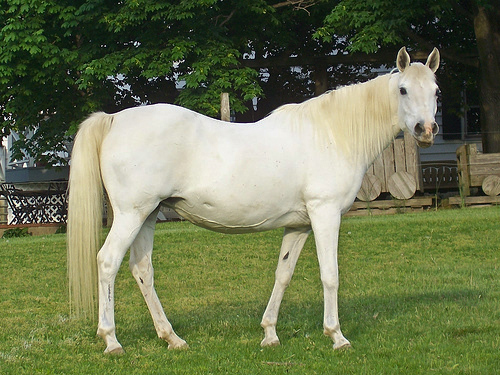
- When Can Horses Become Pregnant?
- Gestation period of mares:
- While some people begin breeding their horses as soon as a filly reaches sexual maturity (around 18 months of age), it is typically safer and recommended to wait until she is also fully grown skeletally, around 4–5 years old, to give her the safest chance to have a foal without any birthing difficulties.
- While many mares may be breed up into their 20s it is more difficult for a mare to conceive for the first time during or after their teens, or if there has been a long period since the last pregnancy.
- Sesonal breeder:
- Mares are seasonal breeders meaning they can be bred from late spring to early fall each year; their reproductive cycle is roughly 21 days in length for each breeding opportunity.
- Each cycle has a small window of a few days where the mare is receptive to a stallion, and an even smaller window when artificial insemination may be successful.
